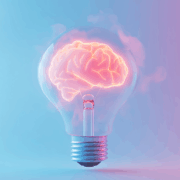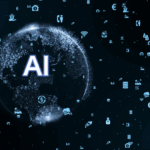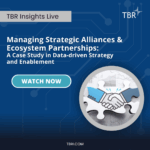Modernization First: Mongo’s Enduring Pursuit of the AI Opportunity
Now is a good time to be in the database business
Since relational databases first entered the market in the 1970s, a lot has changed. Even as non-relational systems entered the scene to help overcome the scale constraints of their SQL-based counterparts, technological revolutions — from the internet to cloud computing — have ultimately revealed the database’s true purpose: a transactional system for storing data. But generative AI (GenAI) is changing markets in ways we never expected, and databases are gaining renewed importance and being seen as more of a strategic piece of the AI strategy. That is because large language models (LLMs), while revolutionary in their ability to generate content and provide reasoning, do not have the underlying memory and ability to execute against the private data that agents thrive on. Customers are now realizing that if they want to bring the next wave of AI applications — AI agents — into production, they need to consider the role of the database.
If it is any indication of the opportunity, almost every cloud vendor now wants to be a data company. Even established data companies are moving down to the OLTP layer, recognizing that while AI models may train well alongside analytics systems (OLAP), AI agents, which thrive on enterprise context, are best built closest to where that enterprise data resides. But even as new analytics vendors vie for a piece of the TBR-estimated $71 billion cloud operational database market, the few companies that have been in the business for more than five decades, including MongoDB, will have some clear advantages when addressing customers’ needs around AI, especially as customers are averse to using net-new databases for vector search.
In today’s market, capabilities like vector and retrieval-augmented generation (RAG) have become a prerequisite for any modern, AI-ready database. While MongoDB is an early supporter of delivering vector search natively in-database, specifically with MongoDB Atlas, it is the company’s 50 years of experience with document architecture and JSON — which powers LLMs and agentic protocols like MCP (Model Context Protocol) — that make MongoDB well suited to address the AI opportunity once customers overcome legacy application modernization hurdles.
Modernization precedes AI
Although the fact that 30% of Atlas’ annual recurring revenue (ARR) comes from customers using at least one feature, such as vector search, suggests early momentum, AI is not yet having a significant impact on MongoDB’s growth. The question then becomes, when will this opportunity manifest? While AI startups and digital natives are ready to adopt scalable databases, most enterprises with bigger budgets are not prepared to make the shift. The reality is that these enterprises, although eager to leverage GenAI and agentic AI, have accumulated decades of technical debt and are often ill-prepared to handle the AI innovations the market is introducing.
Enterprises need a way to justify not only the cost of upgrading but also re-architecting their core infrastructure software to take advantage of AI. This is where the innovation announced at the September MongoDB.local NYC event was focused. In some ways, a lot of MongoDB’s AI work has already been accomplished by default due to its JSON-native architecture and early support for vector search in the cloud. The company is now focusing on preparing customers to take advantage of AI.
“At some point Oracle lost the competitive advantage because it was everything for everybody, and as a result of that, the code base become very voluminous and bloated, and that simply wasn’t scalable and agile enough to go around and develop [on] … Oracle Database is still the best on-premises relational system. But when people talk about specifically for GenAI, most likely the GenAI decision makers are not going to be the old-world relational database experts.”
— Managing Director (Firmwide) and Chief Data Architect, Financial Services
Announcing AMP
MongoDB believes that legacy relational databases are ill-equipped to support the needs of AI. However, this is not a unique point of view, as TBR has heard the same thing during its discussions with enterprise decision makers. Of course, Oracle and other vendors will make it very attractive for customers to upgrade to their AI databases, saving them the cost and risk of migrating to a different data model such as MongoDB’s, while often offering steep discounts.
Even so, there will always be a market for customers that want to reduce their dependency on the likes of Oracle and Microsoft SQL Server, not just for scalability reasons as they consider AI but also to reduce the high degree of lock-in these vendors create. That is where Application Modernization Platform (AMP) comes into play. While MongoDB announced new feature updates you would expect at a database conference, such as support for in-query encryption with MongoDB v. 8.2, AMP was the company’s big strategic announcement at MongoDB.local NYC.
At its core, AMP brings together the various tools, processes and best practices MongoDB has used over the years to help customers transition from a relational schema to a document schema. As described to participants at the event, AMP follows “three T’s,” Tools, Techniques and Talent. To be clear, MongoDB has always believed these three attributes are key to a successful migration, and AMP provides the company with an opportunity for some fresh messaging. That said, unlike some of MongoDB’s existing capabilities, such as Modernization Factory and Relational Migrator, AMP leverages GenAI and LLMs to actually convert code, making the platform more than a rebranding or repackaging of existing capabilities, which could help MongoDB expand beyond its core developer audience and engage in more senior-level conversations.
Tools: GenAI for code conversion
Although we have not yet seen significant traction for code conversion as a GenAI use case, customers seem willing to experiment in the hope of lowering the cost and time of migration. This is particularly true as AI puts pressure on businesses to move faster, which is challenging for enterprises that are still spending a significant portion of their IT budgets on maintaining legacy systems. There is no shortage of GenAI-powered code conversion tools in the market to help solve migration challenges, from Microsoft’s GitHub Copilot to Amazon Q Developer: Transform, and AMP acts in a similar capacity, relying on LLMs to analyze the existing code base, test the code and convert it to newer frameworks.
It is too soon to tell if AMP will drive revenue growth for MongoDB, but early use cases are promising. For example, we heard from Geneva-based asset management firm Lombard Odier, which already uses MongoDB as its core database engine and is now using AMP to modernize and migrate 250 applications. We also see an opportunity for MongoDB to leverage its existing hyperscaler partners, which collectively support MongoDB Atlas across 120 cloud regions, to integrate the platform with one of these partners’ existing code conversion capabilities.
Techniques & Talent and the role of services partners
Any GenAI tool on its own is unlikely to solve the modernization problem, and the other attributes of AMP — Techniques and Talent — are where MongoDB adds value. As previously mentioned, MongoDB has been in the business of transitioning customers away from the relational model for decades, and techniques like the App Transformation Framework (ATF) and MongoDB’s engineers, who are equipped to help with validation and deployment, are where MongoDB can add its unique perspective and leverage its code conversion to win these workloads.
That said, we believe MongoDB will still need to consider the role of its services partners, which can provide MongoDB with the enterprise access it needs as it begins to look upmarket and branch outside its core developer audience. For many data ISVs, gaining the attention of global systems integrators (GSIs) is not always easy, as GSIs go where the revenue opportunities are, such as large-scale IaaS migrations or upper-stack areas like analytics that they can build around. With GenAI, however, we see GSIs paying more attention to the data infrastructure layer.
For instance, when we surveyed alliance decision makers at professional services companies, 55% of respondents said data strategy & management represented the most opportunity for partner-led growth over the next two years, up from 42% a year ago. Moreover, GSIs are refocusing on managed services, and a technology partner that can create an enabling layer for cheap and fast migration — leading to customers spending less money on implementation services and more on managed services — represents an emerging opportunity within the ecosystem. In many ways, this shift is being driven by GenAI’s disruption of the traditional services model, but many of MongoDB’s SI partners that were represented at MongoDB.local NYC, including Accenture, Infosys and Capgemini, have also demonstrated success using code conversion tools from other vendors to hasten migrations for clients and scale their own modernization practices.
The same opportunity exists for MongoDB and SIs, provided the company puts the right partner model in place around AMP. At the end of the day, we believe that while MongoDB will be successful in using AMP to transform applications stemming from the data tier, GSIs will play a critical role in extending AMP to the application layer, optimizing that application and, most importantly, tying it to a business outcome. This will be especially true if MongoDB further integrates with its hyperscaler partners, which are perhaps best equipped to bring the GSI to the table and act as an orchestrator of a MongoDB-GSI relationship.
The opportunity is there; success will boil down to execution
Agentic AI has customers and ecosystem participants reconsidering the role of the database. MongoDB is well positioned to capitalize on the AI opportunity, partly due to its JSON-native document database, as well as its early support for native vector search in the cloud. But for customers using legacy systems, there is still much work to be done in preparing for AI, and this is where MongoDB’s investment priorities lie. GenAI provides opportunities to accelerate migrations in ways that customers, which have been running their legacy databases for decades, have never experienced. AMP, which uses LLMs to evaluate and convert code to modern frameworks, combined with MongoDB’s extensive experience in helping customers transition away from the relational model, could be a compelling way to help customers shed their legacy tech debt. Strategically, this could serve as a stepping stone for MongoDB to become a more relevant piece of the enterprise AI strategy. With this opportunity, much of MongoDB’s near-term success will hinge on execution, including a willingness to proactively collaborate with partners in new ways.

 NinjaDesign via Canva Pro
NinjaDesign via Canva Pro
 Technology Business Research, Inc.
Technology Business Research, Inc.